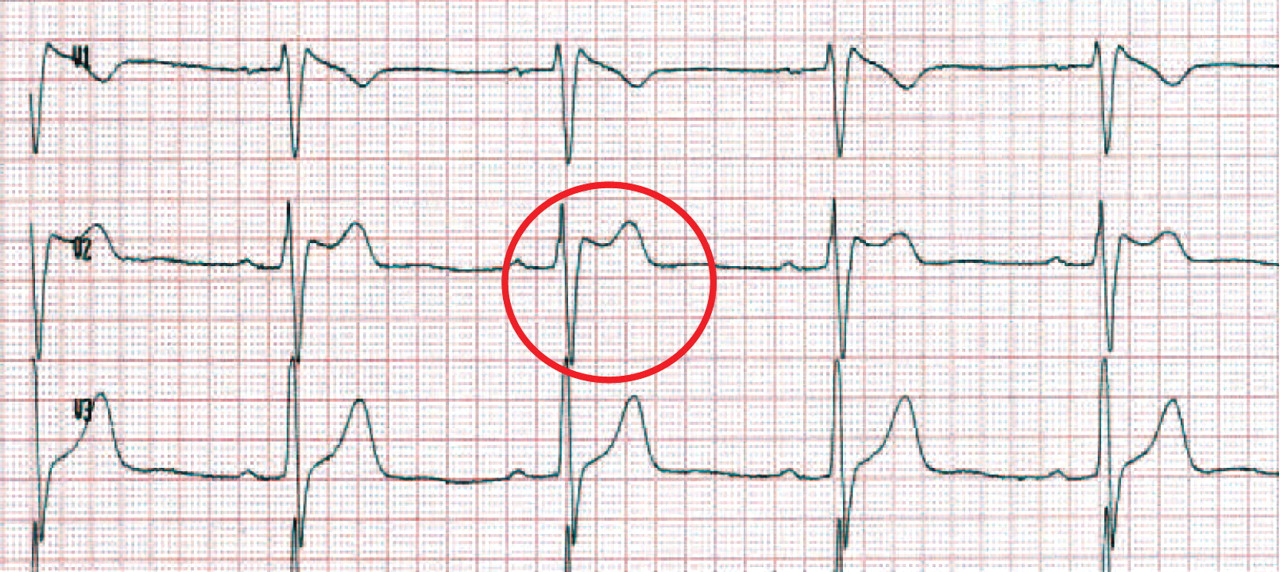To The Editor: Sudden cardiac death associated with psychopharmacological treatment is an important concern
(1) . The causality is poorly understood and most likely multifactorial. However, the electrical conduction system of the heart may be especially implicated. Causes of life threatening ventricular arrhythmias in the absence of structural heart disease include long QT syndrome, with Torsades de pointes, and Brugada syndrome. Both syndromes are ion channel diseases, are influenced by various pharmacological agents, and involve an accentuation of transmural dispersion of repolarization. In Brugada syndrome, transmural dispersion of repolarization is accentuated as a result of a preferential abbreviation of the right ventricular epicardial action potential, whereas in long QT syndrome, accentuation of transmural dispersion of repolarization is secondary to a preferential prolongation of the action potential of M cells (a subpopulation of cells in the ventricular myocardium). Brugada syndrome is characterized by syncopes and sudden cardiac death because of polymorphic ventricular tachyarrhythmia. In approximately 20% of cases, Brugada syndrome is caused by mutations in the SCN5A gene on chromosome 3p21-23, encoding the alpha-subunit of the cardiac sodium channel
(2) . The point prevalence of the Brugada syndrome electrocardiogram (ECG) pattern in the healthy population has been estimated at 1–5 per 10,000 individuals worldwide
(3) . However, it is difficult to specify the true prevalence of this often underdiagnosed disease because the ECG is dynamic and often concealed. The characteristic ECG pattern shows a QRS morphology similar to right bundle branch block, with ST-segment elevation in leads V1–V3. Similar to long QT syndrome, some Brugada syndrome patients display a QT prolongation in their ECG, but this is usually limited to the right precordial leads V1–V3.
This case indicates that lithium, and possibly other mood stabilizers that block sodium channels (e.g., carbamazepine, oxcarbazepine, valproate, lamotrigine), may increase the risk of syncope and sudden cardiac death by triggering Brugada syndrome
(4,
5) . It is known that other psychopharmacological substances, such as tricyclic antidepressants (e.g., amitriptyline, desipramine), phenothiazines (e.g., perphenazine), clozapine, and selective serotonin reuptake inhibitors (e.g., fluoxetine), also interfere with sodium-channel activity. Hence, these substances may also increase the risk of symptomatic Brugada syndrome.
In conclusion, awareness of typical signs of Brugada syndrome in psychiatric patients treated with psychotropic drugs seems to be of importance and may prevent severe cardiologic complications. This underlines the significance of ECG in these patients. Considering the high number of patients treated with mood stabilizers and the fact that Brugada syndrome is frequently not apparent or diagnosed, further work on the influence of psychopharmacological medication on Brugada syndrome would be of great value to enhance the safety of psychiatric drug treatment.


